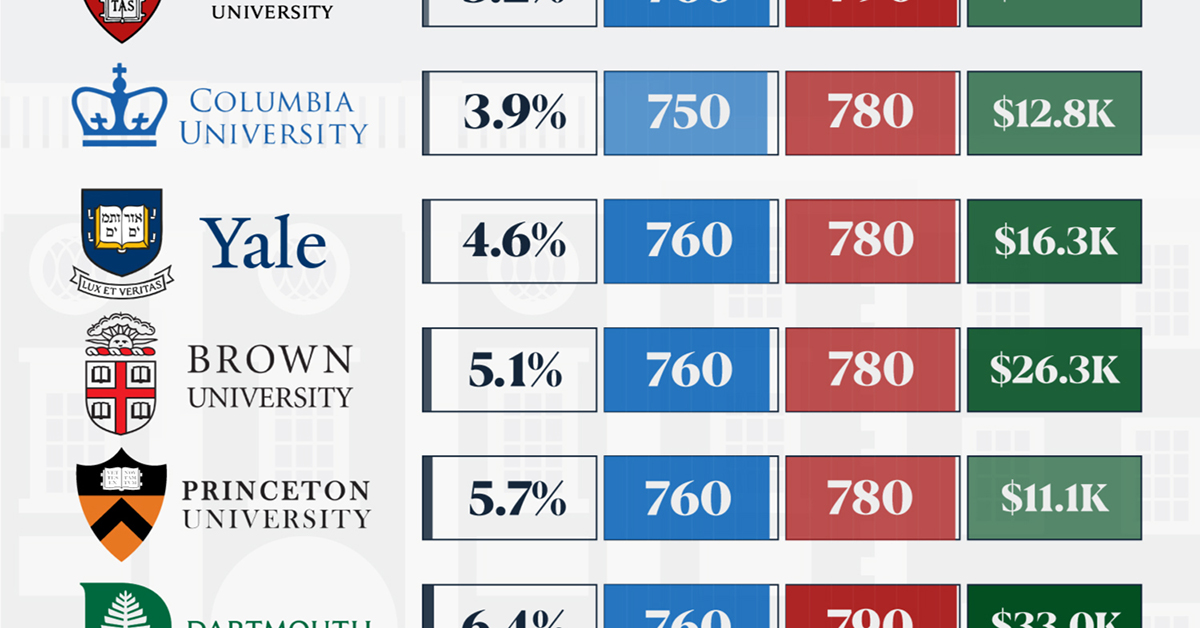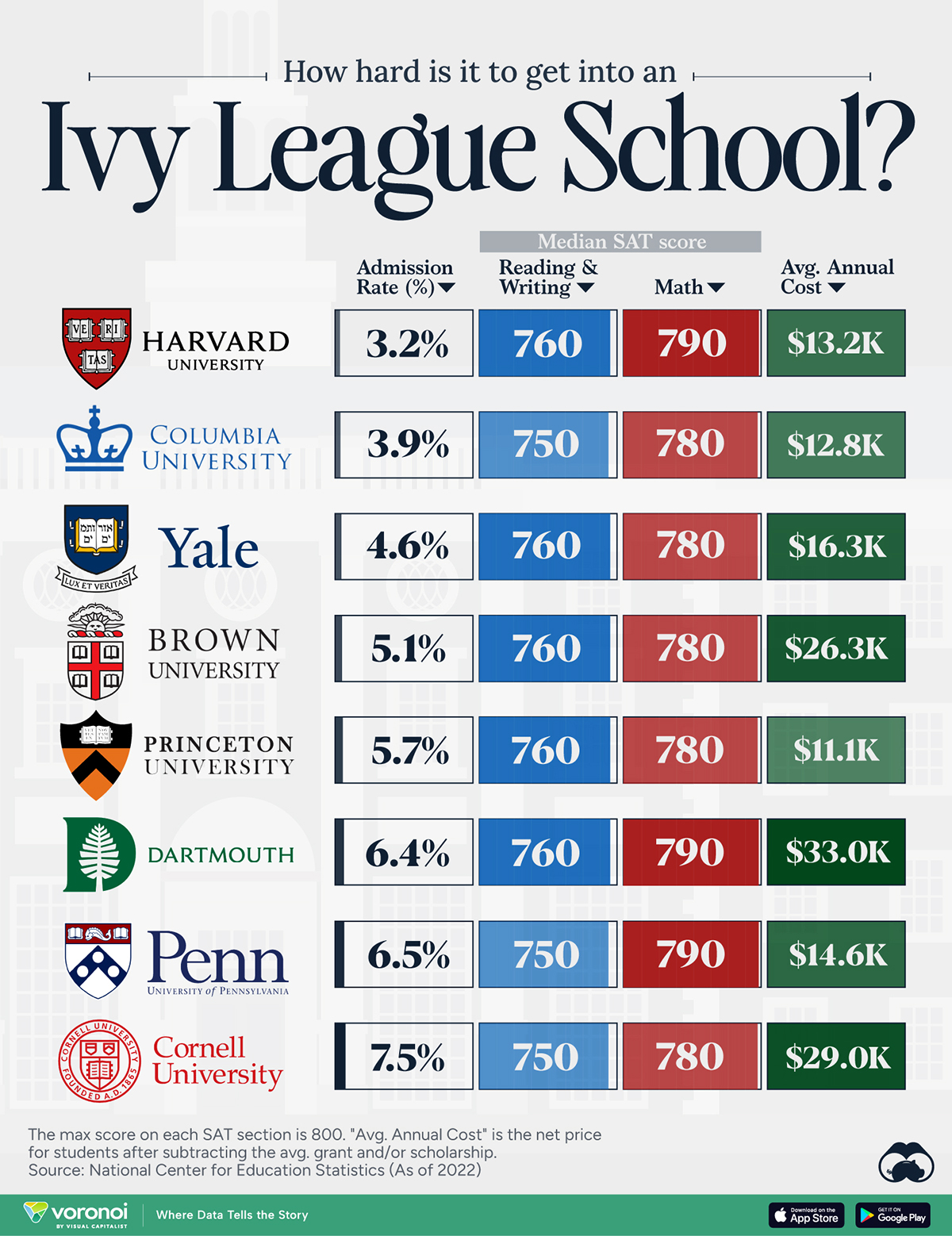Misc
Animation: World’s Largest Megacities by 2100
Animation: The World’s Largest Megacities by 2100
Throughout the course of human history, the biggest cities have always seemed impossibly large.
For many millennia, it was almost unfathomable for a city to sustain more than 1 million residents. In fact, it wasn’t until the 19th century that the largest cities globally, such as London and Beijing, were able to consistently hold populations beyond that impressive mark.
Despite this, in the modern era, we’ve quickly discovered that a city of 1 million people isn’t remarkable at all. In China alone, there are now over 100 cities with a million people today – and as such, our mental benchmark for what we consider to be a “big city” has changed considerably from past times.
Thinking Big
Just like a city the size of modern Tokyo was hard to imagine for someone living in the 19th century, it can be an extremely difficult thought experiment for us to visualize what future megacities will look like.
Researchers at the Global Cities Institute have crunched the numbers to provide us with one view of the potential megacities of the future, extrapolating a variety of factors to project a list of the 101 largest cities in the years 2010, 2025, 2050, 2075, and 2100.
Today’s video uses this data – it’s also an extension to the previous work we did based on the report here.
The Largest Megacities by 2100
According to the report, human geography will look completely unfamiliar by the turn of the century.
Here is a list of the 20 largest megacities projected for 2100:
| Rank | Population (2100) | City | Country |
|---|---|---|---|
| #1 | 88.3 million | Lagos | Nigeria |
| #2 | 83.5 million | Kinshasa | DRC |
| #3 | 73.7 million | Dar Es Salaam | Tanzania |
| #4 | 67.2 million | Mumbai | India |
| #5 | 57.3 million | Delhi | India |
| #6 | 56.6 million | Khartoum | Sudan |
| #7 | 56.1 million | Niamey | Niger |
| #8 | 54.3 million | Dhaka | Bangladesh |
| #9 | 52.4 million | Kolkata | India |
| #10 | 50.3 million | Kabul | Afghanistan |
| #11 | 49.1 million | Karachi | Pakistan |
| #12 | 46.7 million | Nairobi | Kenya |
| #13 | 41.4 million | Lilongwe | Malawi |
| #14 | 40.9 million | Blantyre City | Malawi |
| #15 | 40.5 million | Cairo | Egypt |
| #16 | 40.1 million | Kampala | Uganda |
| #17 | 40.0 million | Manila | Philippines |
| #18 | 37.7 million | Lusaka | Zambia |
| #19 | 36.4 million | Mogadishu | Somalia |
| #20 | 35.8 million | Addis Ababa | Ethiopia |
By the year 2100, it’s estimated that 13 of the world’s largest megacities will be located in Africa. Meanwhile, India will hold three of them – and there will be zero of them found in the Americas, China, or Europe.
Here’s a final look at the top three:
#1: Lagos, Nigeria
Nigeria’s largest city, Lagos, is expected to push the limits of how big a metropolis can get. Already, Lagos has seen explosive growth over the past few decades, and is growing so fast that no one really knows how many people live there. Over 2,000 people emigrate to the city every day, and current population estimates vary widely from 11 to 21 million inhabitants.
Either way, by the turn of the century, Lagos is projected to have a population north of 88 million.
#2: Kinshasa, DRC
Kinshasa, the capital of the Democratic Republic of Congo is projected to be the second largest city in the world with a population of 83 million.
#3: Dar Es Salaam, Tanzania
Dar Es Salaam, a city on the coast of Tanzania, has a population of just 4.4 million today. By 2100, its population is projected to jump by a whopping 1,588%, putting the total at 74 million inhabitants.
Misc
How Hard Is It to Get Into an Ivy League School?
We detail the admission rates and average annual cost for Ivy League schools, as well as the median SAT scores required to be accepted.

How Hard Is It to Get Into an Ivy League School?
This was originally posted on our Voronoi app. Download the app for free on iOS or Android and discover incredible data-driven charts from a variety of trusted sources.
Ivy League institutions are renowned worldwide for their academic excellence and long-standing traditions. But how hard is it to get into one of the top universities in the U.S.?
In this graphic, we detail the admission rates and average annual cost for Ivy League schools, as well as the median SAT scores required to be accepted. The data comes from the National Center for Education Statistics and was compiled by 24/7 Wall St.
Note that “average annual cost” represents the net price a student pays after subtracting the average value of grants and/or scholarships received.
Harvard is the Most Selective
The SAT is a standardized test commonly used for college admissions in the United States. It’s taken by high school juniors and seniors to assess their readiness for college-level academic work.
When comparing SAT scores, Harvard and Dartmouth are among the most challenging universities to gain admission to. The median SAT scores for their students are 760 for reading and writing and 790 for math. Still, Harvard has half the admission rate (3.2%) compared to Dartmouth (6.4%).
| School | Admission rate (%) | SAT Score: Reading & Writing | SAT Score: Math | Avg Annual Cost* |
|---|---|---|---|---|
| Harvard University | 3.2 | 760 | 790 | $13,259 |
| Columbia University | 3.9 | 750 | 780 | $12,836 |
| Yale University | 4.6 | 760 | 780 | $16,341 |
| Brown University | 5.1 | 760 | 780 | $26,308 |
| Princeton University | 5.7 | 760 | 780 | $11,080 |
| Dartmouth College | 6.4 | 760 | 790 | $33,023 |
| University of Pennsylvania | 6.5 | 750 | 790 | $14,851 |
| Cornell University | 7.5 | 750 | 780 | $29,011 |
*Costs after receiving federal financial aid.
Additionally, Dartmouth has the highest average annual cost at $33,000. Princeton has the lowest at $11,100.
While student debt has surged in the United States in recent years, hitting $1.73 trillion in 2023, the worth of obtaining a degree from any of the schools listed surpasses mere academics. This is evidenced by the substantial incomes earned by former students.
Harvard grads, for example, have the highest average starting salary in the country, at $91,700.
-

 Green2 weeks ago
Green2 weeks agoRanked: Top Countries by Total Forest Loss Since 2001
-

 Travel1 week ago
Travel1 week agoRanked: The World’s Top Flight Routes, by Revenue
-

 Technology1 week ago
Technology1 week agoRanked: Semiconductor Companies by Industry Revenue Share
-

 Money2 weeks ago
Money2 weeks agoWhich States Have the Highest Minimum Wage in America?
-

 Real Estate2 weeks ago
Real Estate2 weeks agoRanked: The Most Valuable Housing Markets in America
-

 Markets2 weeks ago
Markets2 weeks agoCharted: Big Four Market Share by S&P 500 Audits
-

 AI2 weeks ago
AI2 weeks agoThe Stock Performance of U.S. Chipmakers So Far in 2024
-

 Automotive2 weeks ago
Automotive2 weeks agoAlmost Every EV Stock is Down After Q1 2024













